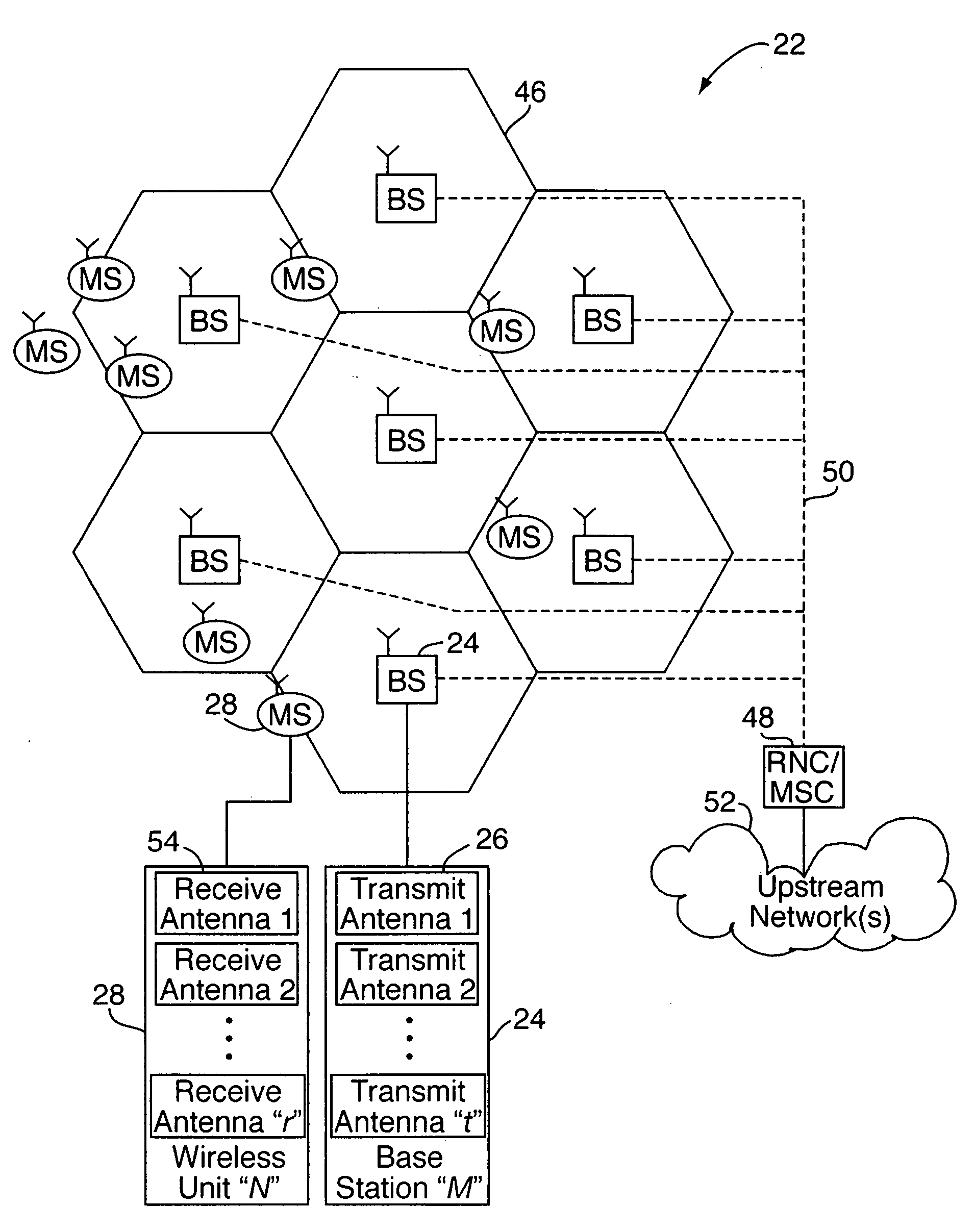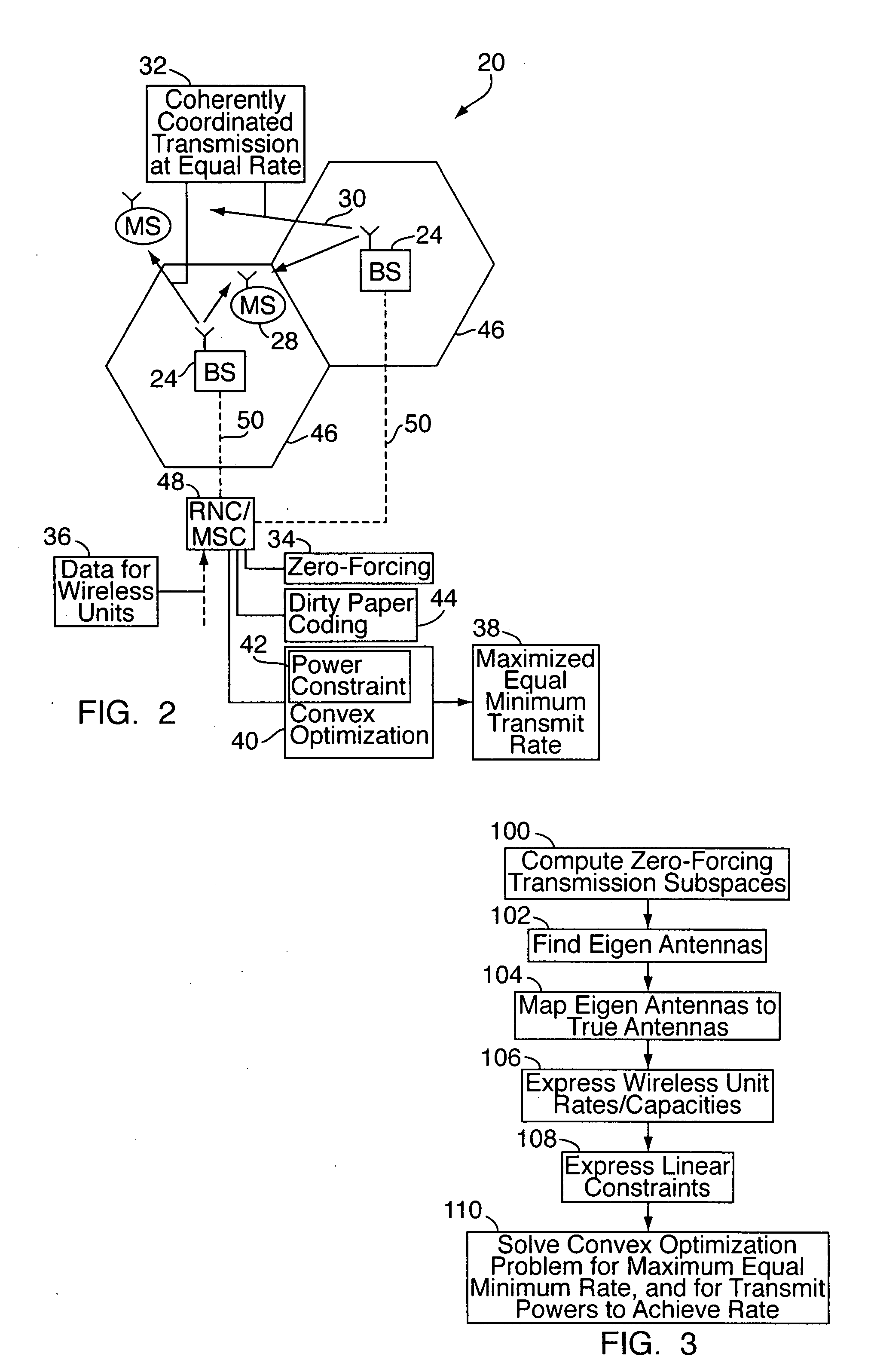Method of coordinated wireless downlink transmission
a wireless downlink transmission and wireless network technology, applied in wireless communication, wireless commuication services, power management, etc., can solve the problems of limiting rf efficiency and capacity in broadband wireless networks, intercell interference, transmissions received from neighboring base stations perceived as interference, etc., to reduce intercell interference, reduce or eliminate any interference, the effect of maximizing the specified ra
- Summary
- Abstract
- Description
- Claims
- Application Information
AI Technical Summary
Benefits of technology
Problems solved by technology
Method used
Image
Examples
Embodiment Construction
[0019]Turning to FIGS. 1 and 2 in overview, the present invention relates to a system and method 20 of coordinated downlink transmission in a wireless network 22. The network 22 includes a plurality of interconnected, fixed base stations (“BS”) 24, each having one or more RF transmission antennas 26, and a plurality of wireless units or mobile stations (“MS”) 28. (“Wireless unit” or “mobile station” refer to mobile phones, wireless PDA's, computerized vehicle navigation systems, wireless devices with high-speed data transfer capabilities, such as those compliant with “3-G” or “4-G” standards, “WiFi”-equipped computer terminals, or the like.) In operation, each base station 24 transmits signals 30 to each wireless unit 28 in a coherently coordinated manner 32 (e.g., signal transmissions are coordinated among the base stations by transmitting data between the base stations for this purpose), for coherent, reinforced reception at the wireless units 28. In other words, transmissions fro...
PUM
 Login to View More
Login to View More Abstract
Description
Claims
Application Information
 Login to View More
Login to View More - R&D
- Intellectual Property
- Life Sciences
- Materials
- Tech Scout
- Unparalleled Data Quality
- Higher Quality Content
- 60% Fewer Hallucinations
Browse by: Latest US Patents, China's latest patents, Technical Efficacy Thesaurus, Application Domain, Technology Topic, Popular Technical Reports.
© 2025 PatSnap. All rights reserved.Legal|Privacy policy|Modern Slavery Act Transparency Statement|Sitemap|About US| Contact US: help@patsnap.com



